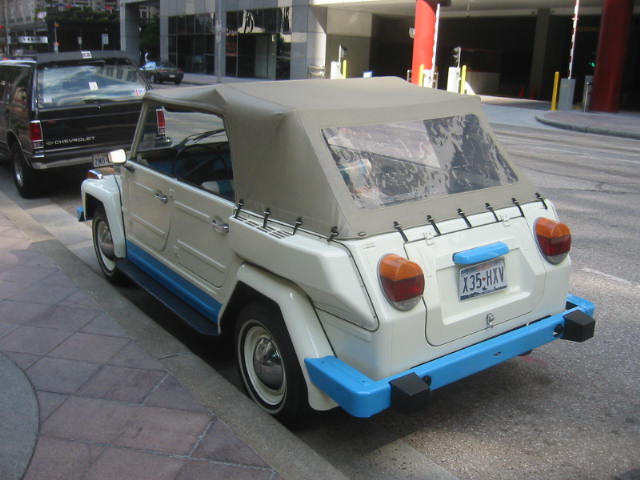Originally operated by the German Labor Front, a Nazi organization, Volkswagen was headquartered in Wolfsburg, Germany. In addition to his ambitious campaign to build a network of autobahns and limited access highways across Germany, Hitler’s pet project was the development and mass production of an affordable yet still speedy vehicle that could sell for less than 1,000 Reich marks (about $140 at the time). To provide the design for this “people’s car,” Hitler called in the Austrian automotive engineer Ferdinand Porsche. In 1938, at a Nazi rally, the Fuhrer declared: “It is for the broad masses that this car has been built. Its purpose is to answer their transportation needs, and it is intended to give them joy.” However, soon after the KdF (Kraft-durch-Freude)-Wagen (“Strength-Through-Joy” car) was displayed for the first time at the Berlin Motor Show in 1939, World War II began, and Volkswagen halted production. After the war ended, with the factory in ruins, the Allies would make Volkswagen the focus of their attempts to resuscitate the German auto industry.
Volkswagen sales in the United States were initially slower than in other parts of the world, due to the car’s historic Nazi connections as well as its small size and unusual rounded shape. In 1959, the advertising agency Doyle Dane Bernbach launched a landmark campaign, dubbing the car the “Beetle” and spinning its diminutive size as a distinct advantage to consumers. Over the next several years, VW became the top-selling auto import in the United States. In 1960, the German government sold 60 percent of Volkswagen’s stock to the public, effectively denationalizing it. Twelve years later, the Beetle surpassed the longstanding worldwide production record of 15 million vehicles, set by Ford Motor Company’s legendary Model T between 1908 and 1927.
With the Beetle’s design relatively unchanged since 1935, sales grew sluggish in the early 1970s. VW bounced back with the introduction of sportier models such as the Rabbit and later, the Golf. In 1998, the company began selling the highly touted “New Beetle” while still continuing production of its predecessor. After nearly 70 years and more than 21 million units produced, the last original Beetle rolled off the line in Puebla, Mexico, on July 30, 2003.
After 1949, production at Volkswagen steadily increased. Nordhoff's experience and knowledge proved invaluable for the company. Late in 1949, an idea for a utility/transport vehicle was developed, and by 1950, the VW transporter was born.
Volkswagens were being exported to neighboring European countries such as Denmark, Sweeden, Luxemburg, Belgium, and Switzerland. As early as 1950, Volkswagen began producing Beetles in South Africa (They were now known as Beetles) as well. Volkswagen comissioned an old German coach building company, Karmann, to build their Beetle convertibles. Every single convertible Volkswagen Beetle was completed by Karmann: hence the special badges on VW convertibles. In 1952, a Volkswagen dealership was opened in England: which was the first there. A few Volkswagens were imported into the United States in 1949 by Ben Pon, but they didn't immediatley gain popularity. Very few were sold in their first year in the US.
The Hoffmann company of New York, which imported Beetles in the early 1950s, eventually abandonded Volkswagen, and imported Porsches instead. Volkswagen did not sell many cars in the United States until later in the mid-1950's.
In 1951, Volkswagen began to export a deluxe version of the beetle. There was already a "standard" Beetle, which was only available in a dull gray color. These standard Beetles were spartan: they lacked synchromesh transmissions, exterior and interior chrome, and other special extra options that one might expect to have as standard in cars today. There were also regular export cars, that were available in several colors. The export cars also had chrome and more options as standard, such as a radio. The American export cars had even more chrome than regular export cars, and were generally the most elaborate with options and features. The American deluxe Beetles got hydraulic brakes in 1952, and lost their semaphores (flag-like turn signals) in 1955.
Volkswagen transporters were not as popular as Beetles, and in the first 5 years of production, there were 4 times fewer Buses built as Beetles. The Buses (and all other transporters) produced before 1955 had characteristically large engine access doors. Today, they are largely known as "barndoor" buses. Some people think that barndoor is supposed to be a reference to the side doors, but it is a misconception. These early barndoor transporters are very rare today.
Still in the 1950's, Volkswagen had already acted on its global goals by building factories in several countries. A factory began building Beetles in England, the plant in South Africa was building them, and a plant in Brazil provided a South American connection. Later, in 1960, a plant in Australia opened up, but never ended up being as successful as the other factories.
Source: history.com

